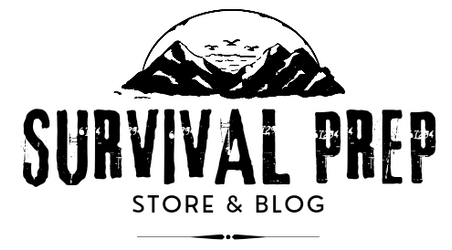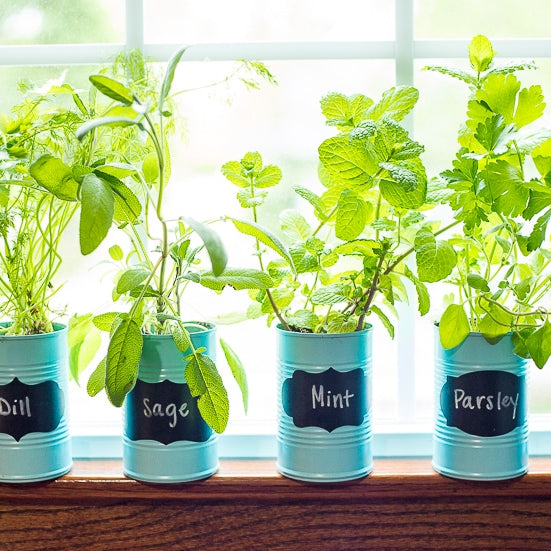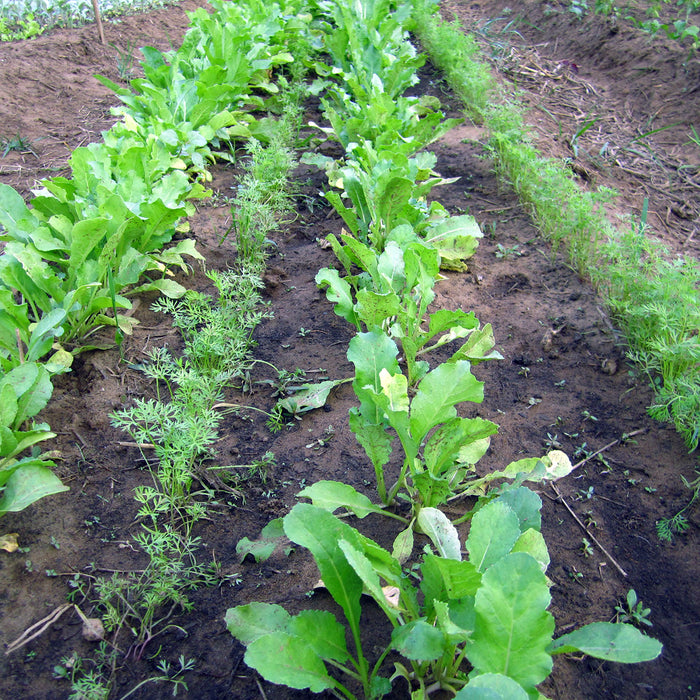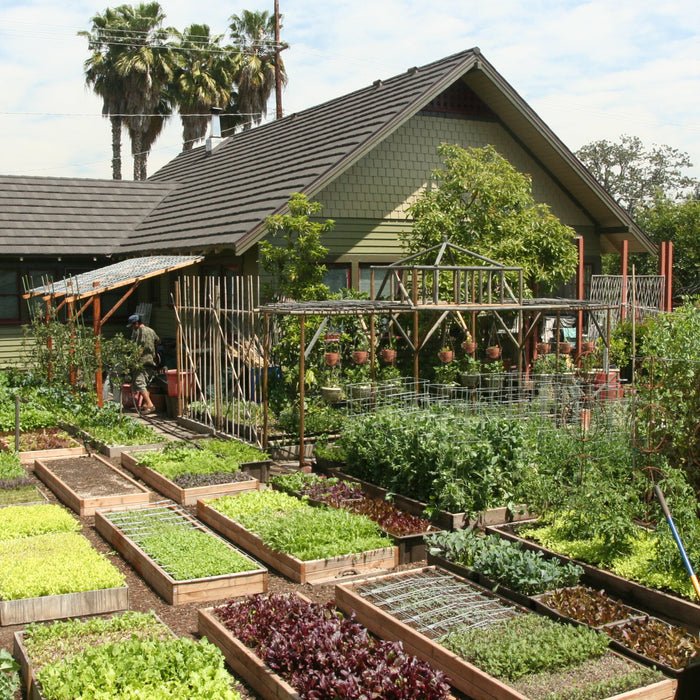Food storage is considered part of being prepared for emergencies and natural disasters. Individuals and families can eliminate some stress, worry and inconveniences by planning for emergency food needs. How much and which foods to store will depend on the members of your household, your preferences, special health conditions, ability to use the food in an emergency, and space for storage. Planning for short-term emergency food needs may be as simple as increasing quantities of some staple foods and non-perishable foods that you normally would use. (Non-perishable foods are those that can be stored safely at room temperatures.)
Preparing a Three-Day Emergency Supply
A three day emergency preparedness kit will be useful for most disasters. Gathering the essential items that could be needed and putting them in one location will help you and your household through the worst days of an emergency. This short-term preparedness kit should of course include food in addition to water, personal hygiene items, flashlights, blankets and other essentials recommended for emergencies. This food supply needs to be non-perishable; select foods that require no refrigeration, minimal or no preparation or cooking, and little or no water. If you will have to heat food you have put away before eating it, pack a grill, camping cookstove and fuel also. For ease in managing your supply, select food items that are compact and lightweight. Include a selection of the following foods in your short-term Disaster Supplies Kit:
- Ready-to-eat canned meats, fruits and vegetables
- Canned juices, milk, soup (if powdered, store extra water)
- Staples " sugar, salt, pepper
- High energy foods " peanut butter, jelly, crackers, granola bars, trail mix
- Foods for infants, elderly persons or persons on special diets (for example, diabetics or those with allergies)
- Comfort/stress foods " cookies, hard candy, sweetened cereals, lollipops, instant coffee, tea bags
- Vitamins
Make sure you have a can opener, scissors or knife for cutting open foil and plastic pouches, and disposable plates, cups and utensils. Pack all these items in plastic bags (zipper closures work well) to keep them dry and as airtight as possible. Keep a list of dates when food items need to be inspected and possibly rotated (used and then replaced with newly purchased items).
Foods in a refrigerator and freezer can be used at the beginning of the emergency. See the section, If the Electricity Goes Off.. below. If you have enough advance warning about a possible power outage, you can extend the storage time of food in a freezer by filling empty spaces with frozen water. Fill clean plastic containers or jugs with water and freeze them. Food will keep in a well-insulated, well-filled, closed freezer for 2 to 3 days.
Preparing a Two-Week Emergency Supply
Even though it is unlikely that most emergencies will cut off your food supply for two weeks, some people choose to consider a short-term supply as one that will last that long. If you are in an area where it is known that power can be off for extended periods, a two-week supply may seem very reasonable. The same general suggestions found above for a three-day supply will also work for a two-week supply. However, for two weeks or more of emergency eating, it might be wise to pay more attention to nutrition needs than is necessary for 3 days of surviving special conditions. Plan food supplies so at least one well-balanced meal could be eaten each day.
One way to develop a two-week emergency supply is to increase the amount of basic foods you normally keep on your shelves. If you eat out regularly, you will need to take that into consideration and increase the amount of supplies you normally eat in a two-week period of time. Your plan should be based on foods that do not require power for keeping them refrigerated or frozen. Many people already have a two-week supply of most staples on hand if they stop and think about it and make a written plan. Keep the supply fresh by rotating non-perishable staple items in general storage once or twice a year.
Suggestions to help you plan a two-week supply of food on hand:
- Make a list of all family members by name, indicating any special needs (diabetic, allergies, etc.)
- List all staple foods on your shelves now. Indicate amount available, date purchased, date opened and use by/replace date if known. Post this list near storage cabinets or closets and update when changes occur.
- Repeat the step above for foods in your freezer.
- Make a list of meals to be served, labeled "Day 1" through "Day 14". Indicate where food can be found for each day, if not stored all in one location.
- Add notes to each day's list that indicate how much water and what equipment and utensils will be needed for preparation. This process will force you to think through what you will need to purchase and store.
- If staples such as rice, instant cereals and potatoes and dry milk are not kept in packages with cooking directions, be sure to write up preparation steps or mix ratios on index cards and keep them closed in air- and water-tight plastic bags for use during the emergency.
Other tips to help you manage your food storage:
- If packages do not contain a use-by or expiration date, date foods when purchased and when opened. (A freezer pen or other permanent felt-tip marker works well.)
- If foods are not to be used for regular needs, be sure to clearly label them as Emergency or Disaster Food and store in a special location.
Food Suggestions
Military and camping supply stores are good sources for some compact, well-preserved foods that are good choices are for emergency preparedness kits. A group of foods called MRE's, or Meals-Ready-to-Eat, require little or no preparation. Dehydrated or freeze-dried foods are lightweight and take up little room, but you will need to plan extra water supplies for rehydrating them for use. Some dehydrated foods, like fruits, can be eaten as is, of course. If some foods in your kit will require cooking, be sure to also include some that are ready to eat. Fires or stoves for cooking may be available during some emergencies; sometimes you may not even have those available, or at least not all the time. Keep in mind that short-term emergency supplies need to emphasize survival, energy and hydration (water), but planning ahead means that you can also plan nutritionally balanced meals.
Food Ideas That Keep on the Shelf
Ready to Eat:
- MRE's
- Canned fruits, vegetables, beans, meats, fish
- Canned juices, broths and soups
- Shelf-stable "boxes" of juices and milk
- Crackers and melba toast (don't pick combination packs with cheeses or luncheon meats if they require refrigeration)
- Peanut butter, jelly
- Dry, ready-to-eat cereals and granola
- Dried fruits, nuts and trail mixes
- Jerky
- Granola bars
- Hard candy
Also Plan Water Supplies to Prepare:
- Instant oatmeal
- Dry milk
- Powdered drink mixes
- Instant pudding
- Dried soups
- Bouillon cubes or powder
- Instant rice and potatoes
If the Electricity Goes Off...
FIRST, use perishable food and foods from the refrigerator. THEN use foods from the freezer. To minimize the number of times you open the freezer door, post a list of freezer contents on it. In a well-filled, well-insulated freezer, foods will usually still have ice crystals in their centers. Consume the foods only it they have ice crystals remaining or if the temperature of the freezer has remained at 40 degrees F or below. Covering the freezer with blankets will help to hold in cold. Be sure to pin blankets back so that the air vent is not covered. FINALLY, begin to use non-perishable foods and staples.
Cooking Without Power
For emergency cooking you can use a fire, a charcoal grill or camp stove outdoors only. You can also heat food that tastes better warm with candle warmers, chafing dishes and fondue pots. Do not plan on using these warming items for cooking raw foods that have to be thoroughly cooked to be safe " for example, raw meats, poultry, seafood, eggs and products containing them.
Additional Advice About Canned Foods
One of the best choices for emergency food supplies is commercially canned foods. Canned foods are also cooked and can be eaten right of the can, or just warmed if they taste better that way. Foods that are canned are considered shelf stable and do not require refrigeration until opened. Shelf life, or how long they will last, is determined by methods that evaluate the quality of the food. Canned foods can last two years or longer (products are in the marketplace now that are dated "00' to indicate they don't expire until the year 2000.) For best quality, store canned foods in cool, dry locations and use within one year.
If you include canned foods in your emergency food supply, inspect your supply periodically to make sure there are no rusty, leaking, bulging or badly dented containers and no broken seals. Dents that involve seams or can ends can break seals. Large or severe dents in the sides of a can may also break a seal around the can end or seam, even though it might not be obvious. Replace items found in any of these conditions. Do not eat out of cans found in any of these conditions during the emergency. If the disaster has produced conditions where canned foods are in flood waters, inspect them carefully for signs of damage. Throw out any home canned foods or foods in glass jars, whether opened or not, that have been soiled by flood waters. If food has been commercially canned and the metal can is still intact and not rusty or bulging, it can be used but will need to be cleaned and sanitized before opening.
Cleaning Sealed Cans After a Flood
- Mark contents on the CAN with a permanent ink pen.
- Remove paper labels (they can harbor dangerous bacteria and they probably won't stand up to the rest of the procedure).
- Wash the cans in a strong soap or detergent solution with a scrub brush. Carefully clean areas around lids and seams.
- Soak cans in a solution of two tablespoons of chlorine bleach to each gallon of water for 15 minutes.
- Air dry cans before opening (with sanitized can opener!)
References:
-
Nummer, B., Washburn, C. and Hunsaker, T. A Guide to Food Storage for Emergencies. (2013-01pr). Utah State University Extension, Logan, UT. 2013. http://extension.usu.edu/foodstorage/ou-files/Food_Storage_Booklet2.pdf
- The Church of Jesus Christ of Latter-Day Saints. 1998. Emergency Preparedness Manual.
- Federal Emergency Management Agency. Food and Water in an Emergency. (FEMA-477). FEMA, Washington, DC. August 2004.
- Food Safety and Inspection Service-USDA. Dec. 2016. Food Product Dating. FSIS, Washington, DC.
- CDC. 2017. Keeping Food and Water Safe After a Disaster or Emergency. Accessed at https://www.cdc.gov/disasters/foodwater/facts.html




